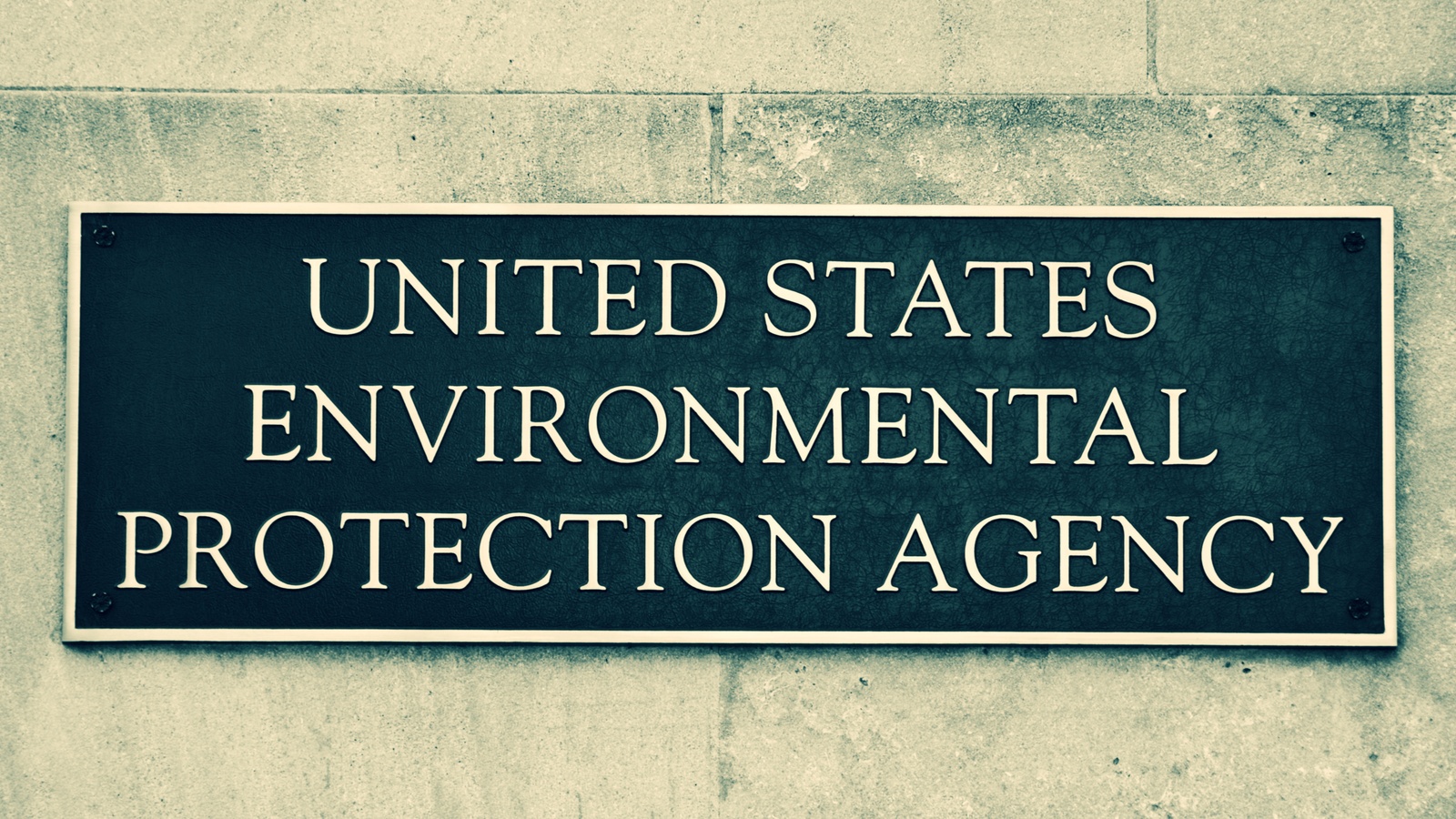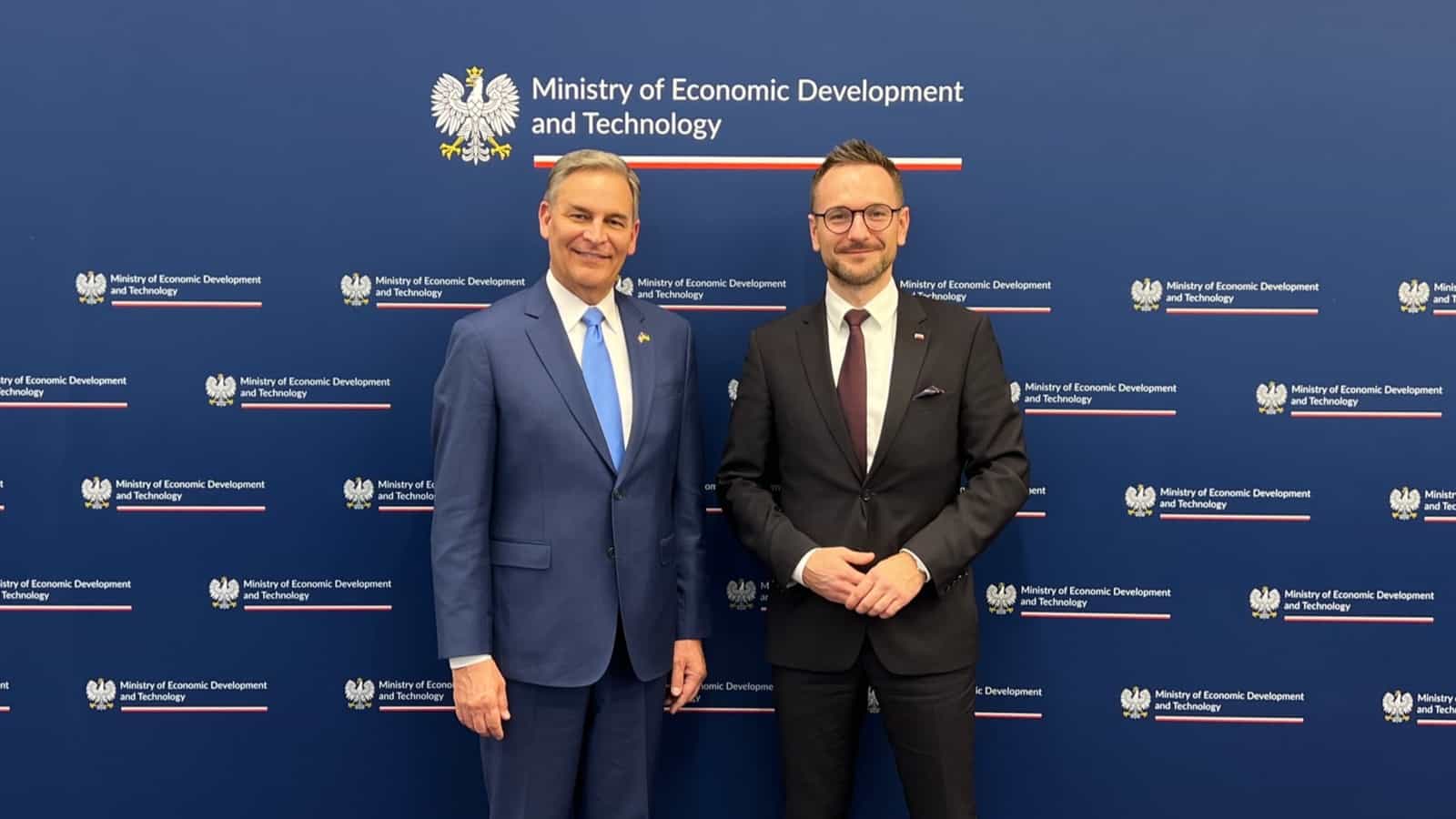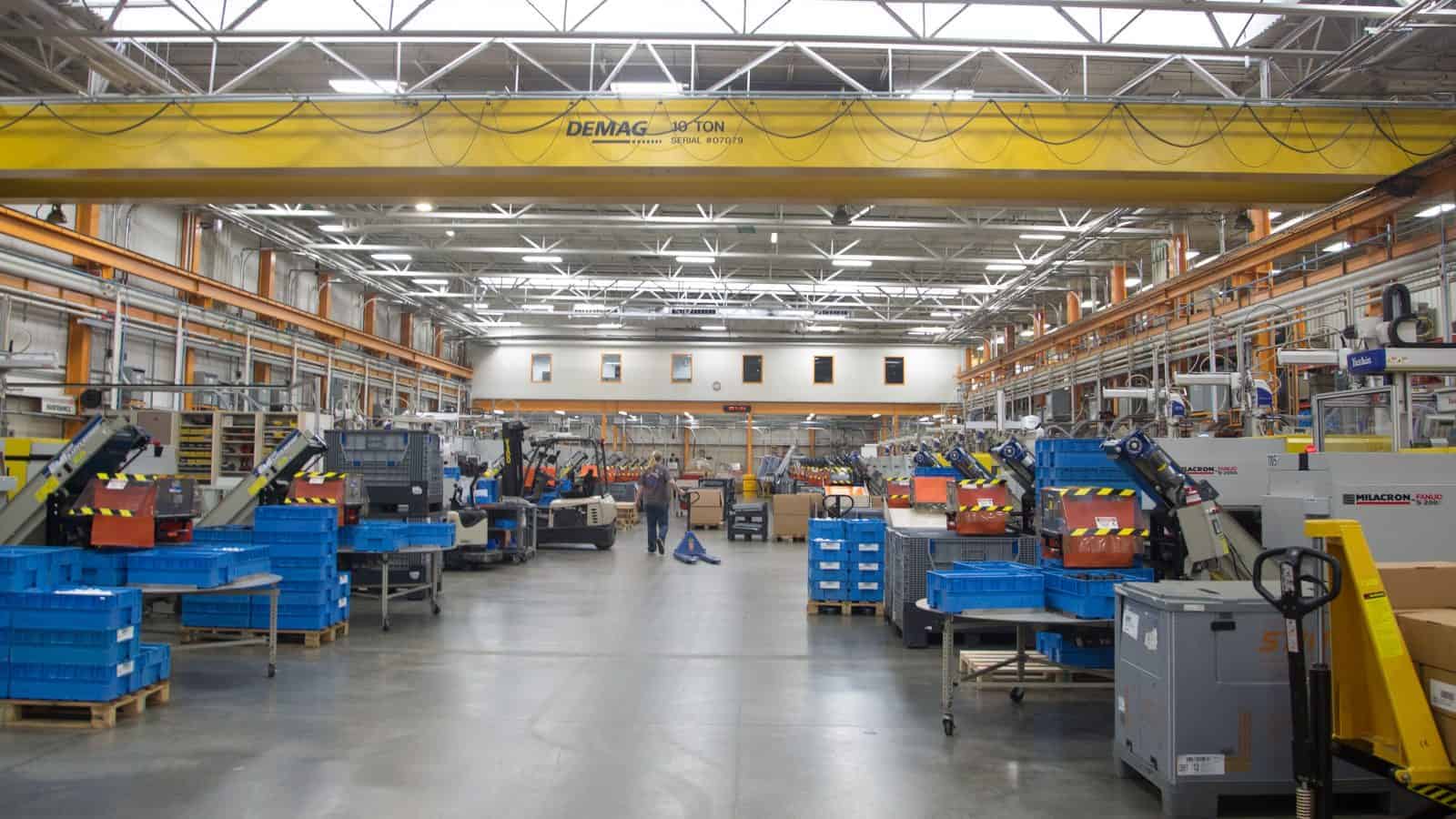NAM Fights SEC Buybacks Rule

Yesterday, the U.S. Securities and Exchange Commission finalized a rule that requires new disclosures from companies conducting stock buybacks.
The background: Stock buybacks are a commonplace practice that allow companies to ensure that their cash reserves are being used effectively. Returning capital to shareholders benefits both the company and its investors by increasing shareholder returns, enhancing capital formation and ensuring efficient capital allocation.
- Over the past few years, however, policymakers and regulators have taken steps to discourage buybacks, and the SEC has now finalized a rule targeting them.
The burden: The SEC’s rule imposes several new burdens on manufacturers conducting buybacks:
- A requirement that companies disclose detailed buyback data from each day of a fiscal quarter—imposing significant costs and dramatically increasing the complexity of businesses’ quarterly filings
- A requirement that companies provide disclosures justifying their buybacks, which could further politicize these capital allocation decisions
- New disclosures related to companies’ stock buyback programs and transactions by company management and boards of directors
The pushback: The NAM spoke out against the SEC’s rule when it was proposed last year, detailing the harm it would do to manufacturers.
- In particular, the NAM called on the SEC to reverse its proposed next-day disclosure requirement, which would have mandated upward of 250 new SEC filings per year for many public companies.
The result: Thanks to the NAM’s advocacy, the SEC’s final rule left out the daily disclosure requirement—a significant victory for manufacturers.
- However, companies will still be required to track daily buyback activity to comply with the quarterly day-by-day reporting mandate.
- In addition, the final rule maintained the proposal’s burdensome requirement that companies describe the “objectives or rationales” for any stock buybacks as well as the “process or criteria” used to set buyback targets.
The next steps: Most domestic companies will be required to provide daily buyback data in their Q4 2023 filings, meaning that daily tracking will begin in October 2023 and be reported to the SEC in early 2024. Most foreign companies will be required to comply in their Q2 2024 filings.
The last word: “The NAM is disappointed that the SEC has chosen to unjustifiably punish manufacturers for returning capital to their shareholders,” said NAM Managing Vice President of Tax and Domestic Economic Policy Chris Netram. “Manufacturers, investors, retirement plans and the entire economy benefit when companies can efficiently allocate capital via share repurchases.”
Further reading: The SEC rule is not the only action targeting buybacks in the past few years. The Inflation Reduction Act included a new tax on buybacks—which the NAM also opposed. It is currently engaging with the IRS to minimize the harm done to manufacturers by the tax. Read more here.
Tax Change Throws a Wrench in Westminster Tool’s Operations

As a family-owned small business that works with giant, complex industries like aerospace and medical devices, Westminster Tool knows its ability to innovate is what sets it apart. The 25-year-old company makes complex injection mold systems, composite tooling and components—including devices used in medical transplants and high-performance plastic parts for military aircraft.
- “We’re constantly looking to improve ourselves,” said Westminster Tool Chief Financial Officer Colby Coombs. “We’re always looking to push technological advancements, bring products to market faster, improve quality and reduce cost.”
So when a harmful R&D tax change went into effect, it caused real problems for the Connecticut-based company.
The change: Until recently, businesses could deduct 100% of their R&D expenses in the same year they incurred the expenses. But since last year, the tax code has required businesses to spread their R&D deductions out over a period of five years, making it much more expensive upfront to invest in the kind of innovation at which Westminster Tool excels.
The impact: As a result of the policy shift, Westminster Tool has found itself paying significantly more in taxes—and having to scale back its ambitions.
- “The impact has been large,” said Coombs. “Because of this change, I had to reconsider a contract that was going to mean new jobs and diversification just based on the cash flow that I needed in order to pay the government.”
- “Ultimately, this law may prohibit me from hiring more people, training more people in new skills, investing in our community and bringing in new work stateside.”
The uncertainty: As a result of uncertainty, small businesses are being forced to hold off on investments they can no longer afford.
- “I am at the mercy of this law, waiting to see how it plays out before I can make any large-scale investment in our business,” said Coombs. “It is putting massive pressure on our ability to grow and be an employer of choice in our community.”
The urgency: Coombs also emphasized the international nature of the challenge. With so many global competitors—especially those based in China, which provides a super deduction for manufacturers—an inability to invest in R&D will hurt manufacturing in the U.S.
- “If Congress doesn’t do the right thing this year, this is going to be a job growth prohibitor or a job killer,” said Coombs. “We are trying to compete with international competitors that aren’t hamstrung by this problem. If Congress fails to fix this issue, it will drastically impact my ability to compete with the global powers in our industry.”
The small business effect: Coombs notes that small businesses in particular will be harmed by this change, since they don’t have the cash reserves to take on significant new expenses.
- “Small companies don’t have the balance sheets to handle this,” said Coombs. “We are doing the best we can to survive, to represent our state, to make advancements and offer the best job opportunities we can. This law is prohibiting me from doing what we’re striving to do.”
The last word: “Failure by Washington to reverse this change will put companies underwater and out of business,” said Coombs.
You can find more information and ways to take action at the NAM’s R&D Action Center.
Permitting Reform Would Unlock U.S. Potential, NAM tells Congress

Reforming the permitting process for infrastructure projects could raise standards of living in America, unlock the full potential of ambitious recent legislation and make us less dependent on hostile foreign nations—all while making manufacturing in the U.S. more competitive, NAM President and CEO Jay Timmons told lawmakers yesterday.
What’s going on: Timmons gave testimony at “Opportunities to Improve Project Reviews for a Cleaner and Stronger Economy,” a hearing of the U.S. Senate Committee on Environment and Public Works, where he stressed the need to fix the needlessly time-consuming, complex permitting system.
- “For manufacturers, permitting reform is essential for our ability to compete in the global economy,” he said. “If we want more critical minerals for chip manufacturing, more domestic energy development and transport . . . more manufacturing facilities and jobs back home, better highways, bridges, airports [and] waterways, then we need permitting reform to make them a reality in the near future.”
Cut the wait: There is no reason for projects to take a decade or more to get approval, Timmons said.
- “If Washington could streamline the process—like manufacturers do in our businesses every single day—we could do more for this country,” Timmons continued, citing a White House Council on Environmental Quality report which found that environmental impact statements take an average of four-and-a-half years to complete.
- Timmons noted that in the case of one project, permits “from the U.S. Army Corps of Engineers were delayed a year due to the failure of the U.S. Fish and Wildlife Service to complete a required informal consultation under the Endangered Species Act.”
What to do: Timmons urged senators to work together to realize the following manufacturing priorities for permitting reform:
- Consolidated permitting processes with enforceable deadlines
- Fast approvals for transportation infrastructure projects
- A commitment to developing homegrown critical resources
- A moratorium on federal-agency regulations prior to the implementation of current standards
- Congressional assurance that lawmakers will hold the administration to recent and future statutory streamlining efforts
Protecting our values: Leaner, more efficient permitting and a commitment to sustainability and other American values can go hand in hand—and that’s exactly what manufacturers want, according to Timmons.
- “Manufacturers have a deep commitment to environmental stewardship, and we do not believe corners should be cut,” he said. “We believe in protecting our community, our neighbors and our environment. Reform is about . . . ensuring that this country—a democracy rooted in free enterprise—isn’t outpaced or outflanked or overtaken by nations that don’t share our values, don’t respect the environment or don’t recognize the dignity of human rights.”
NAM in the news: Bloomberg Law previewed Wednesday’s Senate hearing and wrote about it afterward.
- The offices of Sens. Shelley Moore Capito (R-WV), Kevin Kramer (R-ND) and Cynthia Lummis (R-WY) highlighted Timmons’ Senate testimony following the hearing.
Voluntary Climate Disclosures Show That SEC Rule Is Redundant

An aggressive climate-disclosure rule proposed by the Securities and Exchange Commission hasn’t yet become law, but many companies are already adopting climate-disclosure practices and methodologies, according to The Wall Street Journal (subscription).
- Companies’ efforts to adopt climate strategies appropriate for their businesses, as well as the evolving methodologies for such reporting, are clear indications that the SEC’s costly and overly restrictive climate-reporting mandate is not necessary, said NAM Senior Director of Tax and Domestic Economic Policy Charles Crain.
What’s going on: “The Securities and Exchange Commission’s rule—which would require public companies to report climate-related risks and emissions data, including so-called Scope 3 emissions that come from a company’s supply chain—is expected to be brought in soon. … [But] [s]ome businesses have for years pursued carbon-related goals without the government forcing their hand,” according to the Journal.
- Manufacturers have led the move toward sustainability, with many having already begun to track and curb their emissions and work with their suppliers to do the same.
Why it’s important: “[G]roups from private manufacturers to egg farmers have balked at the cost and complexity of complying with a Scope 3 mandate from the SEC. The regulator has estimated its plan will raise the cost to businesses of complying with its overall disclosure rules to $10.2 billion from $3.9 billion, an additional cost of about $530,000 a year for a bigger business.”
- Manufacturers have urged the SEC to drop the Scope 3 reporting mandate. Some say it unfairly “creates a risk of double counting, because the supply-chain emissions of one company are the in-house emissions of another,” according to the Journal.
- While SEC Chair Gary Gensler told the House Committee on Financial Services earlier this month that the rule is not intended to burden private companies, “[m]andatory Scope 3 reporting would represent a costly, uncertain and ultimately infeasible standard for public issuers as well as the small and privately held businesses within their supply chains,” NAM Managing Vice President of Tax and Domestic Economic Policy Chris Netram told the same committee.
The last word: “Manufacturers [are] leaders in combatting climate change and making the necessary disclosures about this important work,” said Crain.
- “The SEC’s attempt to mandate a top-down, uniform approach to this evolving field would dramatically increase costs and legal liability for manufacturers—without improving information availability for investors or helping companies achieve their sustainability goals.”
NAM Poll: Noncompete Ban Would Be Harmful

The Federal Trade Commission is proposing to ban noncompete agreements, but doing so would disrupt the operations of most manufacturers, according to the findings of a recent NAM poll.
What’s going on: In February, the NAM polled manufacturing leaders to learn their thoughts on the impact of the FTC’s proposed rule, which would prohibit employers from imposing noncompete agreements on employees. Among the poll’s key takeaways:
- Approximately 70% of respondent manufacturers use noncompete agreements.
- The ban would cause a disruption for approximately 66% of manufacturers.
- The majority of manufacturers—about 89%—said they use noncompetes that last from six months to two years.
- Approximately half of manufacturers polled said a ban would have a negative impact on their investment in training and related programs.
Why it’s important: “Manufacturers use noncompete agreements only for select workers handling their most sensitive information, which cannot be allowed to fall into competitors’ hands,” said NAM Vice President of Infrastructure, Innovation and Human Resources Policy Robyn Boerstling.
- “These agreements are critical for protecting intellectual property. Banning them would force companies to completely change the way they operate and the way teams work together—disrupting workplaces, jeopardizing their ability to develop important new products and ultimately hurting customers.”
What should be done: If the FTC insists on moving forward with a noncompete rule, it should withdraw its current proposal and put forth a more tailored version “with exemptions clearly articulated and justified for the public’s consideration,” NAM Director of Labor and Employment Policy Brian Walsh told the agency.
What’s Next for WOTUS?

The future of the Biden administration’s too-stringent rule governing the “waters of the United States” remains unclear following the president’s veto of legislation that would have overturned it, according to E&E News’ GREENWIRE (subscription).
What’s going on: “Republican lawmakers pushed almost immediately for a veto override targeting the…WOTUS rule on Thursday in the hours after President Joe Biden nixed a resolution that would roll it back.”
- A Republican-led measure in the House and Senate using the Congressional Review Act to block the overly restrictive WOTUS rule passed both chambers of Congress last month.
- House Republicans say they will push for a veto override.
Why it’s important: The Biden administration’s version of the rule replaced NAM-backed regulations from the previous administration.
The background: The Supreme Court is expected to make a decision this year on Sackett v. EPA, a case brought by an Idaho couple who have been blocked from building a house on their land for more than 15 years after the Environmental Protection Agency said part of the property was a wetlands.
- The NAM and many GOP congressional leaders previously urged the administration to await the ruling on this case before releasing a final WOTUS rule.
- Issuing a new rule prior to a Sackett v. EPA decision only confuses things for manufacturers, making hiring and investment more difficult, NAM Senior Vice President of Policy and Government Relations Aric Newhouse said in December, following the release of the new rule.
What’s next: While “the fate of WOTUS remains murky as ever,” according to the article, several states have frozen the new rule.
- “Texas and Idaho secured an injunction on March 20, the day WOTUS took effect in the rest of the country. Those states are now subject to 1986 regulations, while the other 48 states are operating under the Biden administration’s definition—a split that has left the regulated community baffled as to how to operate nationally.”
The NAM says: “By vetoing the bipartisan Congressional Review Act on the WOTUS rule, the president removed an item that manufacturers greatly desire: regulatory certainty,” said NAM Vice President of Energy and Resources Policy Brandon Farris.
- “While the country awaits the decision in Sackett v. EPA, numerous investments in much-needed energy and infrastructure projects may be put on hold due to confusion over the new definition and potential added costs of compliance.”
NAM Urges Rejection of PRO Act

The NAM is opposing the reintroduction of legislation that would institute “card check” and other labor policies harmful to manufacturers.
What’s going on: A coalition of nearly 100 organizations including the NAM urged Congress last week to reject the Protecting the Right to Organize Act, introduced in the House in February by Rep. Robert C. Scott (D-VA).
- “This bill would limit workers’ right to secret ballot elections, trample free speech and debate, jeopardize industrial stability, threaten vital supply chains, limit opportunities for small businesses and entrepreneurs, cost millions of American jobs and greatly hinder the economy,” they told Congress.
What’s in it: This legislation would significantly worsen—not improve—conditions for employees, the coalition argued. It would:
- Limit workers’ free speech and remove the right to vote via secret ballots.
- Hand confidential worker information over to unions without employee consent.
- Allow unions to choose bargaining units that maximize their chances of winning elections.
- Eliminate right-to-work laws.
- Allow intermittent strikes and remove bans on unions boycotting companies that do business with those engaged in an active labor dispute.
The cost: “The economic impact of the PRO Act would be catastrophic,” the coalition continued, citing one study which “found that the bill’s independent worker reclassification provision alone could cost as much as $57 billion nationwide, while the joint-employer changes would cost franchises up to $33.3 billion a year, lead to over 350,000 job losses, and increase lawsuits by 93%.”
In the spotlight: Many provisions of the PRO Act were raised during a hearing Wednesday of the Senate Health, Education, Labor and Pensions Committee chaired by Sen. Bernie Sanders (I-VT)—demonstrating that this issue and this legislation will remain a top priority for him and others in the Senate.
NAM to EPA: Don’t Change NAAQS Standards

The NAM continues to push back against proposed revisions to the National Ambient Air Quality Standards for particulate matter.
What’s going on: On Tuesday NAM Director of Energy and Resources Policy Chris Morris urged the Environmental Protection Agency to withdraw its recent proposal to lower the primary annual particulate matter standard from 12.0 µg/m3 to between 8.0 and 10.0 µg/m3.
The big picture: “Manufacturers in the U.S. have become leaders in environmental stewardship and sustainability,” Morris pointed out.
- “Across the board, levels of major pollutants have declined dramatically, and the United States is outpacing our global competitors in air quality improvements,” he said.
- “According to the EPA, the U.S. has reduced six common NAAQS pollutants, including PM5, by 78% between 1970 and 2020. Additionally, the EPA data show that PM2.5 air quality has improved 43% between 2000 and 2020.”
The new regulations: The EPA’s new standards would impose a substantial economic burden on manufacturers, Morris continued.
- “First, there is the direct economic exposure manufacturers will face, which is a measure of the gross value added or employment in the manufacturing sector that could be affected or [placed] at risk,” he said.
- “Second is the indirect economic exposure of manufacturing as a result of a stricter PM5 standard. This refers to the effects on the sector as the consequences are felt throughout the supply chain due to decreased overall investment.”
By the numbers: The EPA has estimated the total cost of the controls required for compliance with the proposed standard at up to $1.8 billion—and that figure could go higher, the agency admitted.
- This expensive policy will lead to job losses and fewer new manufacturing facilities, as well as fewer modernizations and expansions to existing facilities, Morris continued.
Unattainable standards: What’s more, some areas in the U.S. are “in non-attainment” with the current PM2.5 standard, so a stricter standard will only put them further out of compliance, Morris told the EPA.
What should be done: To keep U.S. manufacturing competitive and to safeguard well-paying jobs, Morris said, the EPA should maintain the current annual particulate-matter standard of 12.0 µg/m3 and withdraw its proposal.
The NAM in action: The NAM has been rallying manufacturers across the country to speak out against the EPA’s proposal and calling on Congress to oppose these harmful regulations.
- During the 2023 State of Manufacturing address last month, Timmons announced the launch of a nationwide campaign to maintain these standards in order to protect manufacturers.
NAM Tour in Poland: Strengthening Democratic Ties and Supporting Ukraine’s Rebuild

The NAM’s Competing to Win Tour in Europe continued this week with a stop in Poland, where NAM President and CEO Jay Timmons highlighted manufacturers’ support for Ukraine both in his high-level meetings and in media interviews.
Solidarity with Ukraine: At the U.S. Embassy in Warsaw, Timmons and U.S. Ambassador to Poland Mark Brzezinski met to advance manufacturers’ shared solidarity with Ukraine and the importance of strengthening U.S. commercial relationships with Poland and other democratic allies.
- During a meeting with Poland’s Minister of Economic Development and Technology Waldemar Buda, Timmons discussed the direct support and investment by U.S. manufacturers in Poland, which they can use as a base for rebuilding Ukraine after Russia’s defeat.
Humanitarian work: A visit to UPS Poland highlighted the company’s humanitarian work to support refugees from Ukraine.
- UPS has suspended operations in Russia and Belarus and has partnered with several organizations on the ground in Ukraine to provide emergency funding, in-kind support and core relief supplies to refugees.
- UPS has transported and donated millions of meals, winter coats, medical supplies, blankets and other items to aid refugees, while also providing support to its Ukrainian employees and their families.
Interview on “Morning Joe”: Live from Warsaw, Timmons appeared on “Morning Joe,” where he emphasized the power of commerce, and manufacturers, to preserve, protect and expand democracy.
- “[T]he most important thing is to support our allies that believe in democracy. I’m very concerned right now that we have a divide between democracies and authoritarian regimes,” said Timmons. “And American business, I think, can help lead the way to strengthen and support democracy.”
- “I don’t think that there’s any threat quite as grave as what we’re seeing coming out of Russia right now,” he continued. “President Xi, and his visit from China to Moscow, I think really sends a pretty big warning signal for the West.”
- The show covered Ukrainian President Zelenskyy’s recent address to the NAM Board of Directors and spotlighted the NAM’s leadership on the world stage—as well as that of individual companies.
Roundtable discussion: Timmons’ last event in Warsaw was a roundtable discussion at AmCham Poland with representatives of manufacturers in the United States that operate in Poland.
- The meeting highlighted the importance of supply chain resilience, energy security and robust, market-opening trade agreements in the work ahead in rebuilding Ukraine, which require a mobilization of capital, industry and governments not seen in Europe since 1945.
- The meeting also covered opportunities for American businesses to support Poland in these efforts and to promote democratic values.
The last word: “Forty years ago this month, President Reagan warned the world not ‘to ignore the facts of history and the aggressive impulses of an evil empire,’” said Timmons. “A [statue of President Reagan] stands across the street from the U.S. Embassy in Warsaw.”
- “As Poland generously absorbs and supports nearly 2 million Ukrainian refugees who have been displaced by Russia’s barbaric and unprovoked war, Reagan’s words are just as important today as they were then.”
EPA Proposes PFAS Standards

The Environmental Protection Agency has proposed the first federal limits on two chemical compounds that were used widely in everyday products for decades, The Wall Street Journal (subscription) reports.
What’s going on: “The agency is proposing maximum allowable levels in the nation’s public drinking-water systems for two compounds in a class of chemicals known as perfluoroalkyl and polyfluoroalkyl substances, or PFAS, which were used for decades in carpeting, clothing, food packaging, firefighting foam and other consumer and industrial products. The EPA also said it would regulate four other PFAS chemicals by requiring treatment if the combined level reaches a certain concentration.”
- The suggested limits under the Safe Drinking Water Act are part of a larger move by the EPA to tighten rules around “forever chemicals”—so known because they take years to break down—owing to “a growing number of studies [that] have shown links to a variety of cancers, thyroid disease, high cholesterol and other issues.”
- The two individual chemicals under discussion are known as PFOA and PFOS, which various industries began using in the 1940s for their ability to resist grease, corrosion, water and stains, as well as to douse fires.
Why it’s important: While the EPA says the change would prevent numerous deaths and illnesses, not everyone is assured of the soundness of the science behind it—and others say it would cost companies unnecessarily.
- Critics of the new proposed standard say the chemicals are still necessary components of numerous products, from cell phones to medical devices, and there are no viable alternatives. Moreover, when used correctly, PFAS compounds do not pose a significant health risk to humans or the environment, they say.
- One source told the Journal the new limits “would cost water systems $40 billion” in compliance-related spending.
Our take: “Everyone deserves access to clean drinking water, and manufacturers continue to do their part to ensure we achieve the highest levels of environmental stewardship,” said NAM Director of Energy and Resources Policy Chris Morris.
- “Manufacturers in America are committed to the communities in which they live and serve and are dedicated to protecting the health, safety and vibrancy of those communities. The EPA’s proposal leaves many questions unanswered on the feasibility of meeting these new standards and the economic impacts this will have on communities, especially rural communities and consumers. The NAM looks forward to continuing to work with the EPA to ensure everyone has access to clean drinking water.”
